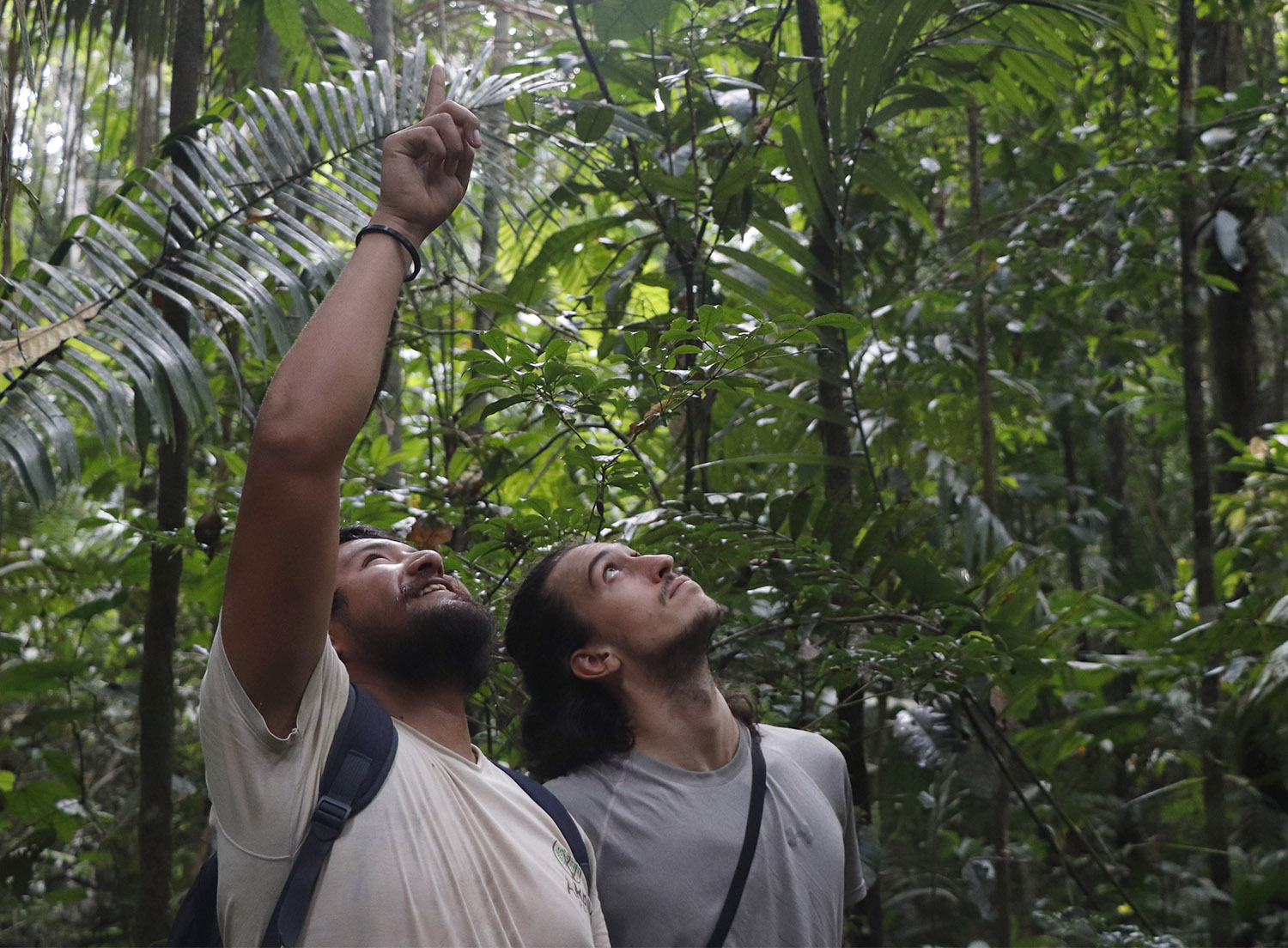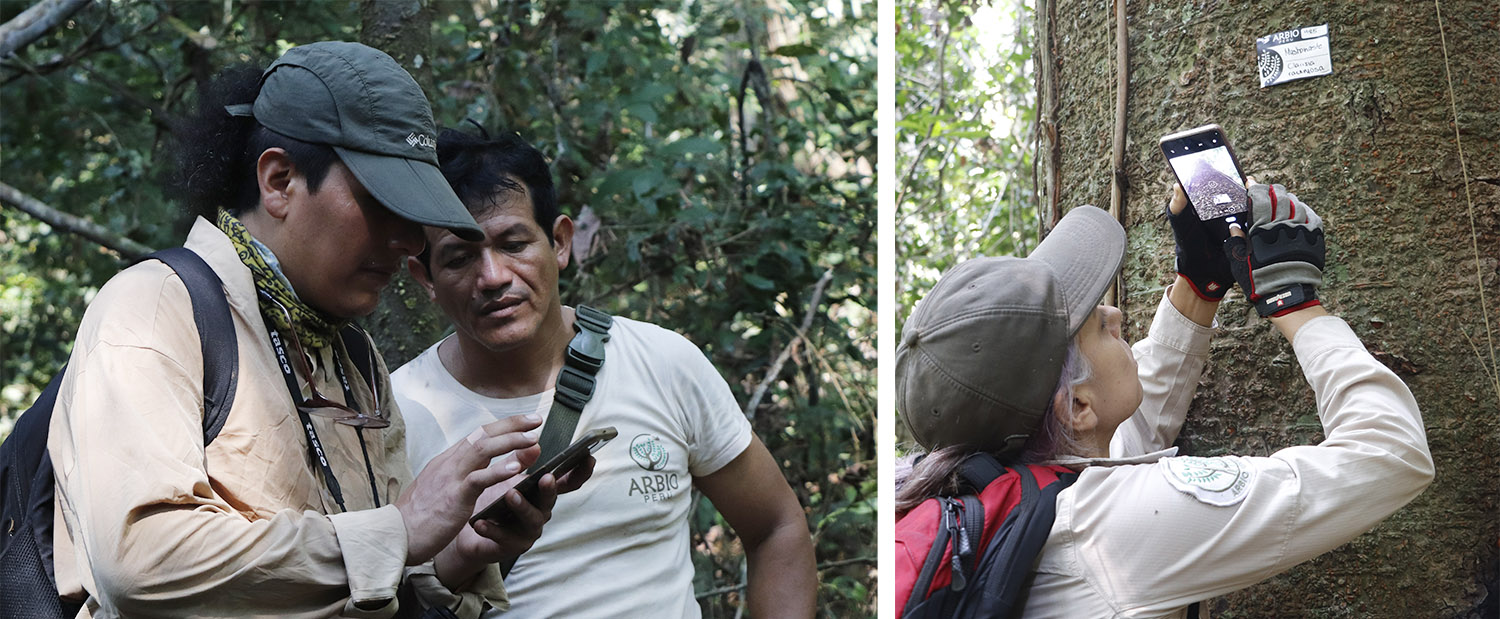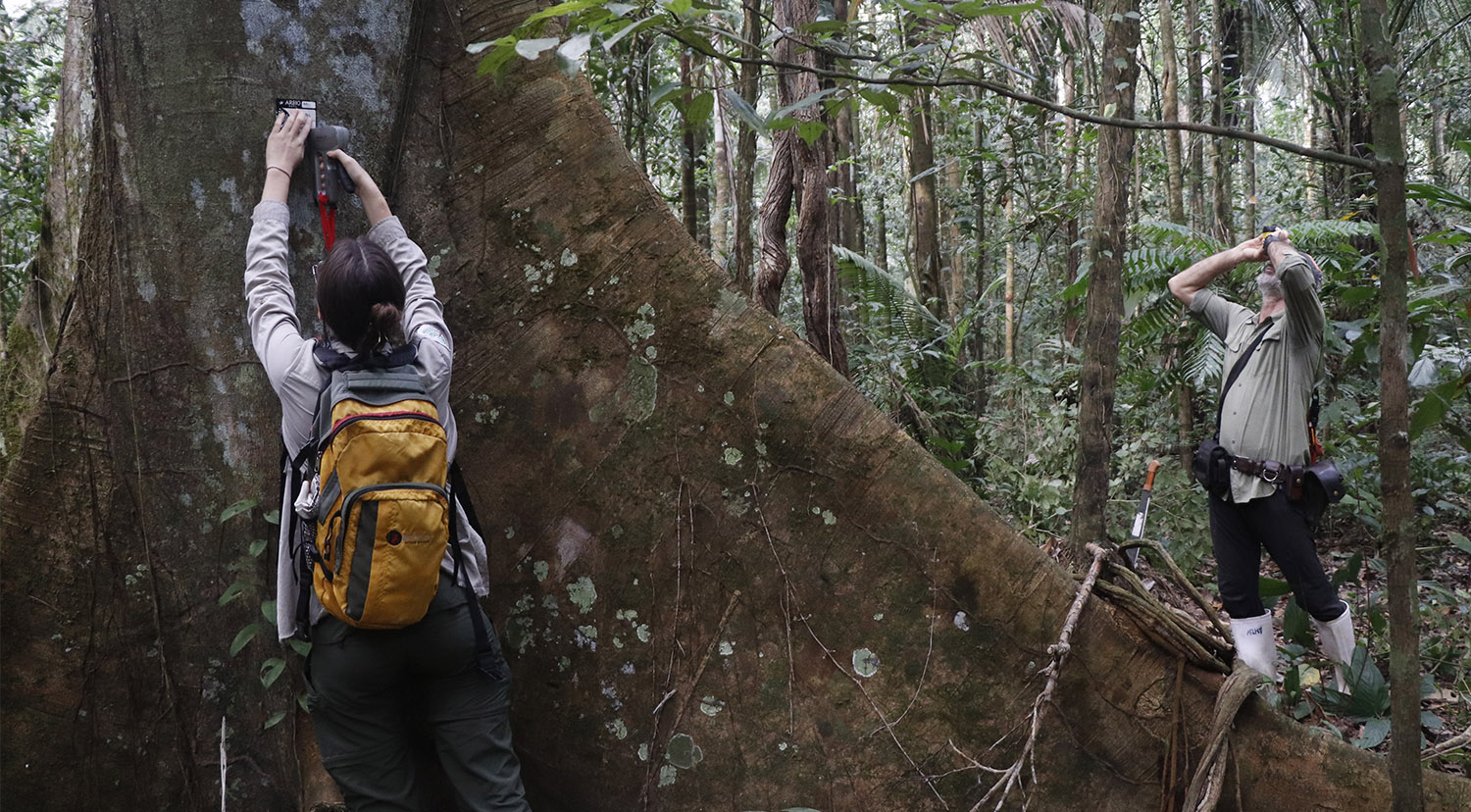To continue our research in the rainforest and to have a precise database of the flora in our protected area, at ARBIO we have an inventory of the most interesting species of trees. By surveying big trees in the Amazon forest, more specifically, in the area of our concession, we are able to know the characteristics of each tree, the spatial distribution of the species, their relationship with wildlife, and many other details.
The methodology
Carrying out a tree census in the middle of the Peruvian Amazon requires a team of trained people. Very early, we leave the ARBIO Station to enter the forest and begin the exploration. We advance along the previously demarcated trails and, thanks to professionals and experts in our jungle, we search and identify on each side (50 meters to the right and left), important and interesting trees for future investigations.
What data do we take?
We know how censuses work in cities for people, but do we know how censuses work in forests for trees? It is not just about counting how many trees there are and what species they are, there is much more valuable information that must be collected.
Once a large tree of the species that interests us is found, the first thing we do is take the coordinates of the exact place where the specimen to be censused is. Once with this information, data collection begins. On one hand, the total height of the tree is measured with a laser hypsometer. At the same time, other people measure the circumference of the trunk at different heights with a centimeter in order to calculate the diameter. Meanwhile, seeds or regeneration of the species are searched in the soil to find out if that tree is a good seed source. It is also important to know the phenology, that is, if the tree is with fruits, or in flower, or releasing its seeds, and observations on the presence of nests, burrows and other signs of forest animals associated with that tree.
This data is collected by a person who writes everything down, takes photos, and saves the information in an application that has been developed by ARBIO specifically for this purpose, called CENSARBOL. And finally, a label is carefully placed that reads (indicates) the common name of the species, its scientific name, and a unique code to each tree, assigned to have an orderly and transparent database.
Field experience
Surveying trees in the forest is not just a monotonous and exclusively scientific activity. In the process, admiration for nature, love for the forest, and connection with Mother Earth are inevitable. We continue to learn and discover more and more about this wonderful Amazon ecosystem about which we still know so little.
At ARBIO we want to contribute to further research, while, at the same time, protecting and preserving the giants standing.
Work in the field is not easy, because in addition to long hours of walking, you must fight mosquitoes, the countless insects, and the overwhelming heat of the jungle. However, all of this has its rewards. Located in a primary forest, it is not only the majestic ancient trees that we find on our walks, but also the entire variety of fauna that, sometimes very hidden, from time to time decides to come and say hello.
Surveying big trees in the Amazon rainforest
Why would we want to protect something we don’t love? And how can we love something we don’t know? For this reason, at ARBIO we place great importance on activities such as the tree census to continue building our inventory.
These trees are available on our online large tree adoption platform. Thus, through us, people from any part of the world can join in the protection of centuries-old trees and, perhaps, one day come to meet them in person.



